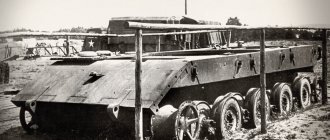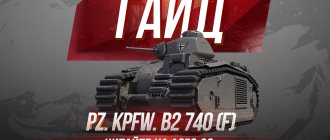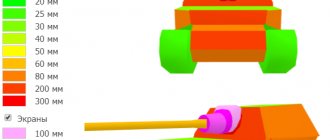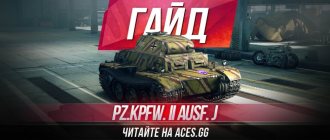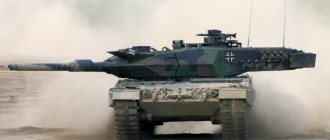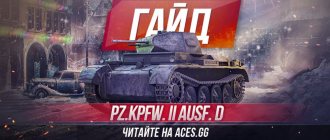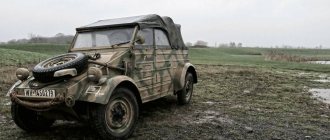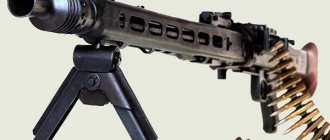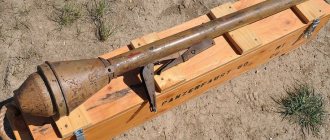German T-34-T as a manual for the ignorant
The farther from the war, the further from the USSR, the more noticeable the advantage of Soviet knowledge over Russian. Those who graduated from Soviet schools and universities, over those who studied under all these newfangled educational programs, copied from Western analogues. Knowledge versus computer. Real facts versus facts considered real by the majority of votes on Wikipedia.
You say: what does this have to do with weapons and the problems of education in Russia?
Yes, despite the fact that it is there, in this very Wikipedia, that our children and grandchildren gain their intelligence. We saw this in the comments to articles about weapons or armored vehicles. Knowledge gained from “war” games. Moreover, the “knowledge” is aggressive. From the series “Two opinions, mine and the wrong one.”
With all that being said, we have nothing against what the employees of Wargaming and Gaijin Entertainment are doing. War games are a very useful thing, especially since in order to correctly draw the same tank on a computer, workers go through mountains of archival papers. In an attempt to bring everything as close as possible to its historical appearance.
Another question is that our users, having assimilated the information received during the game, behave according to the principle “make... pray to God...”
In dialogues with representatives of these very young people, we came across one example of the manifestation of such knowledge. Imagine our reaction when a young man, clearly interested in the history of Soviet armored vehicles, suddenly says that during the war the Germans invented the T-34-T! Moreover, he posts real photographs of those years, in which tractors and other special vehicles based on the T-34 tank with German crews are actually visible.
So the question arises: who is this material intended for and who are those who prepared it really working for?
For those who want to know the truth about the war, or for what is called the truth on the Internet today?
We think, after all, for the audience whose education we, to put it mildly, have lost. To that very young man who wants to know, but is not trained to separate the wheat from the chaff. And I am forced to believe what the Internet is filled with.
So, Nazi Germany started a war in Europe. All the vaunted European armies, despite talk about their power and invincibility, quickly raised their paws up and turned into nothing. The German war machine crushed these armies in a short time and gained a lot of trophies at its disposal. Including military equipment and weapons.
Naturally, this technique began to be used by the German army in subsequent campaigns. This is quite logical, since the military industry of the conquered countries also began to be controlled by Germany.
To put it simply, the Wehrmacht in the sense of military equipment and weapons became a European army. Not German, but pan-European. Because the Germans captured a lot of things from all over Europe, and Britain helped.
The Germans broke their teeth in the USSR. The Russians, and in that war they were all Russians, not only did not give up, but also accomplished a feat in the rear. Factories were removed in a short time, specialists were evacuated. Production took place deep in the rear.
But at the same time, in the initial period of the war, the losses of Soviet troops, including armored vehicles, were enormous. Moreover, the equipment came to the Germans not only after the battle, but also in completely serviceable condition, abandoned, for example, due to lack of fuel. In this case, the Wehrmacht dealt with tanks exactly the same way as it did in Europe. Instead of a star, they drew a cross, and the tank went into battle as a German.
But there were also vehicles that fell into the hands of the Germans with faulty weapons or with a damaged turret. At the same time, all other systems operated properly. So they were used as tractors and other special vehicles. Moreover, the Germans did not think much about modernization. They simply removed the turret, and the resulting hole in the hull was simply covered with a tarpaulin.
This is the story of war. But how does this relate to the “invention” of the T-34-T?
But no way.
This is a myth, rather clumsily crafted and designed specifically for history buffs.
After all, if you take the manuals “Manual on towing and evacuation of damaged equipment” (1940), “Memo on the evacuation of vehicles from the battlefield” (1941), “Manual for a tank soldier” (1941), “Guide to evacuation of stuck tanks from the battlefield" (1942), it directly states that the evacuation of tanks must be carried out using tractors or artillery tractors.
However, it also says that in some cases the commander has the right to use tanks for these purposes. These can be not only more powerful cars, but also the same type with damage. Why in some cases? What is the reason for this decision?
Alas, the reason is the tanks’ service life. No one will allow the commander to spend the motor resources of a combat vehicle on the evacuation of damaged tanks. The tank must fight, and not perform the functions of an ARV. But the Red Army began to use tanks with damage by removing the turrets as special ones, in particular as command vehicles, already in 1942.
True, these were not T-34s. These were BT-7 and T-26. Already in the battle of Stalingrad, these very vehicles appeared in our army. The M-17T engine, which is generally worthy of a separate story, completely satisfied the tank commanders in all respects. And it was impossible to “get hit” for using the BT-7 and T-26 tanks “for other purposes.” The cars have not been produced since 1940.
If the T-34 was damaged, commanders were obliged to send it for repairs. Either to the rear, to a factory, or to workshops right in the rear of the corps or army. We repeat - the tank must fight! And this is an immutable rule of war.
This is roughly how myths are born, which over time everyone begins to believe. Someone will say - so what? This is not critical. This is just one of the small, not particularly important episodes of that war. Well, people believe in something that didn’t happen, so what?
You can approach history this way. Only after all, war consists of small, completely unremarkable episodes. How many feats were performed by soldiers, officers, generals? Feats that we will only learn about today. Or maybe our children and grandchildren will find out tomorrow. Small episodes of the big war...
The whole question is how to present it. And today we serve it in such a way that patriots of the pen rush into the same trench with the soldiers of General Panfilov, wander through snow-covered forests with Zoya Kosmodemyanskaya and go into the final attack with Alexander Matrosov. Because someone needs to defend the heroes of that war today from such “new historians.” Questioning everything that happened in our history in those years.
This is how history is changed. At first, the episodes seemed completely unremarkable. Then some not very famous battles. Then fictional movies. Beautiful myths that distort events that really happened. And then - belief in Soviet atomic bombs in Japan in 1945. Belief in the decisive role of the United States in the victory over fascism. Faith in the allies of Hitler and Stalin...
Well, as a final nail, here is an extract from the “Evacuation Manual for the Red Army.”
2. Means of evacuation. Vehicles are evacuated from the battlefield by tanks or tractors (wheeled vehicles can be towed by trucks).
A tank of the same type as the emergency one can easily cope with the task of towing on poorly rough terrain in the case when the suspension is not damaged. On very rough terrain and with damaged suspension, a tractor or special equipment is required.
The fact that the pragmatic Germans used everything they could get their hands on for their needs is known to everyone and was featured on our pages in the series “Friends among Strangers.” Therefore, it is not at all surprising that the Nazis began to make ARVs based on everything that came to hand: French, Czech, British vehicles. Our T-27, BT-7 and T-34 were no exception.
If we talk about our units, then yes, before the war and during the war, tank tractors were not mass-produced by the industry. In April 1940, under the leadership of N. G. Zubarev, a technical design for a heavy transport tractor based on the chassis of the T-34 tank, designated “Machine 42,” was developed.
During the war, T-34 tanks with faulty weapons, or those that were well “caught” in the turret, which were dismantled by military workshops, were actually used as tractors.
The turret shoulder strap was sealed with an armor plate in which the entrance hatch was installed. The tractor was intended for evacuating damaged and faulty tanks from the battlefield to a shelter or towing medium and light tanks to a repair site, as well as for pulling out tanks in case of light and medium types of jams.
And just after the war, on the basis of the T-34 tank chassis, three types of tractors were developed and adopted by the Soviet Army: a tractor with a winch, a tractor with a set of rigging equipment, a T-34T tractor, and an SPK-5 self-propelled crane.
But such details had to be reached. To dig in, so to speak.
But then it would become clear that the Germans would not have called this car as indicated, that is, T-34-T. In German, the name would look like this: GPzT-34Z(r) from Gepanzerte Panzer Zugmaschine. But again, you need to dig deeper into the reference books...
It’s much easier to say that the inventors of the tank tractor were the Germans. And ours, as always...
In fact, the Red Army did not have much need for tank tractors before the war. Based on the appendix to the “Guide to the evacuation of stuck tanks from the battlefield,” the evacuation detachment should have had 12 tractors. Which were capable of solving any evacuation problem.
Especially “Voroshilovets”, which was able to drag everything from the battlefield.
But is it really possible to take it like this and admit that things were handled better in the Red Army than in the Wehrmacht? This is not respecting yourself. And therefore such pearls appear, which young “lovers of Internet truth” joyfully applaud:
“The situation worsened with the adoption of so-called new types of tanks: the heavy KV and the medium T-34. Only the most powerful tractors and tractors could work with them. But the latter were, firstly, few in number, and secondly, their speed and mobility were insufficient to keep up with tank formations.”
Here! There were few tractors, and they were slow! We couldn’t keep up with the tank formations!
For a long time we tried to imagine this terrible picture of how, during an offensive (for example) behind a tank formation, suffocating in the dust raised by the advancing tanks, tractors with attached broken and damaged vehicles unsuccessfully try to catch up with the tank columns.
It’s difficult to even imagine what would happen during a retreat; to be honest, we used to grab the life-saving People’s Commissar’s.
Why was it necessary to drag broken vehicles BEHIND the advancing formations, if in my mind they needed to be transported in a completely different direction? Towards the repair and restoration bases and workshops of the advancing corps and divisions.
Or to the factory, if things were really sad.
But is it possible today to imagine that this was the case in the Red Army? No, only the Germans could do this.
And they do believe...
Epilogue: illiteracy and inability to work with sources, plus wild flights of fancy and not very clean aspirations today give rise to just such “masterpieces”. Replacing scientific knowledge with Wikipedia leads to the fact that a person, in order to simplify the process of obtaining information, generally ceases to think logically. Accordingly, the brain, not prepared for mental work, gives in under the pressure of pseudo-information and takes on faith the nonsense generated by the majority of wikivoices.
And this, unfortunately, is our situation today.
What could an infantry fighting vehicle based on the T-34 become?
Home » Alternative tank building » What an infantry fighting vehicle based on the T-34 could become
Editor's Choice Alternative Tank Building
boroda 11/24/2020 2128
19
in Favoritesin Favoritesfrom Favorites 3
Back in the 30s, the Red Army created a whole family of combat vehicles, mainly based on the T-26, for transporting infantry to the battlefield. However, the Soviet military did not understand the need for such vehicles and were not ready to give up tank chassis for the production of armored personnel carriers, self-propelled guns, tractors, etc....
As of the beginning of the summer of 1941, a program was launched to develop tracked armored personnel carriers on the chassis of the T-40 amphibious reconnaissance tank, as well as the GAZ-62 wheeled chassis (the LB-62 armored car was designed on it). These works managed to reach the stage of tactical and technical requirements, and then there was no time for armored personnel carriers.
And only the bloody battles of the Great Patriotic War forced the leadership of the Red Army to reconsider their views and organize the production of self-propelled guns.
The result was that the Red Army faced the Great Patriotic War without armored personnel carriers as a class. The tank became the standard infantry delivery vehicle, and in the case of Soviet tanks, the T-34 quickly became such. This vehicle was quite large; by the spring of 1942 it had become the most popular tank of the Red Army, and it could go where others failed. So tank landings on the T-34 were a common thing. In April 1942, an order was issued to install handrails on tanks.
At the same time, since the beginning of 1942, proposals began to appear for various devices related to the transportation of troops on the T-34. These very proposals were of a diverse nature. Some suggested using armored trailers (armored sleds), and in other cases the T-34s themselves were proposed in their role. Others proposed various adaptations for more effective use of troops on board the T-34. Like armored “pockets for transporting infantry from Major G. M. Kazimirov, senior inspector of tank forces at the political department of the 38th Army...
But in my opinion, tanks are not very suitable for transporting infantry, unlike self-propelled guns such as SU-85 and SU-100, which do not have a rotating turret, but a welded fixed wheelhouse.
The simplest option is to weld sheets of armor along the sides of the deckhouse to the deckhouse at the height of the deckhouse itself, which allows you to cover the soldiers in a reclining position and fire through the sides.
If we assume increased activity in this matter, then we can quite simply get a completely effective Infantry Fighting Vehicle, with weapons:
- Gun caliber: from 76.2 to 122 mm.
- Easel machine gun: Shkas, DShK or coaxial DT.
- Light machine gun: DT.
- Number of paratroopers: 6 - 10 people.
- The armor of the troop compartment corresponds to the base vehicle.
This vehicle is perfect for reconnaissance, deep raids and sabotage, both independently and when accompanied by tanks...
If this infantry fighting vehicle is equipped with a powerful radio, it turns into an excellent Command and Staff Vehicle...
And here is a more alternative model and a slightly different layout - the engine is in the front, and the transmission is in the rear with a common conning tower for the crew and troops.
Source - https://zen.yandex.ru/media/russianengineering/alternativa-bronetehnika-rkka-t34-bmp-5f88e3c9f18baa247964720f

